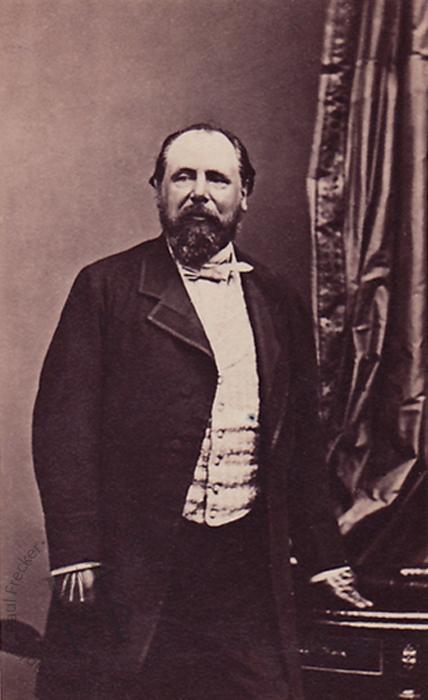King Willem III of the Netherlands
(1817-1890)
Born Prince Willem Alexander Paul Frederik Lodewijk of Orange-Nassau in Brussels on 19 February 1817, he was the son of Willem II and Queen Anna, a sister of Tsar Alexander I of Russia. Willem succeed his father as King of the Netherlands and Grand-Duke of Luxembourg on 17 March 1849.
In 1839 Willem married Sophie, Princess of Württemberg. The marriage was not a happy one, with frequent struggles over the upbringing of their children. Sophie was a liberal intellectual who disliked the army. Willem was a conservative with a life-long love of the military who prohibited all intellectual exercise at home. Queen Victoria, who corresponded regularly with Sophie, called him ‘an uneducated farmer.' He was also prone to unpredictable mood swings, capable of raging against someone one day and extreme politeness the next.
Willem loathed the constitutional changes of 1848, instigated by his father and his chief advisor Johan Rudolf Thorbecke. While his father and Sophie both understood that the changes were key to the survival of the monarchy, Willem saw them only as limitations on royal power. In 1848 he tried to relinquish his right to the throne to his younger brother but was persuaded by his mother to abandon the plan. One year later he became king on the death of his father.
Willem was initially forced to rule with the cabinet of Thorbecke, the liberal designer of the 1848 constitution, a man whom he detested, but when the Catholic hierarchy of bishops was restored in 1853, he found an excuse to dismiss him. In the first two decades of his reign he dismissed several cabinets and disbanded the States-General several times, installing instead royal cabinets which ruled without the support of an elected parliament.
Once his son turned eighteen in 1858, Willem repeatedly contemplated abdication; unable to make the final decision, he continued to rule.
In 1867 he tried to sell the Grand Duchy of Luxembourg, an attempt which almost caused a war between Prussia and France, and spelt the end for Willem’s plans of royal absolutism.
In 1877 Queen Sophie died (the couple had been secretly separated since 1855) and two years later Willem married Princess Emma of Waldeck and Pyrmont, who was forty-one years his junior. Surprisingly, this marriage was a happy one. In 1880 a daughter, Wilhelmina, was born and in 1884 she became heir presumptive on the death of the last remaining son of Willem’s first marriage.
Willem became seriously ill in 1887. He died at the palace of Het Loo near Apeldoorn on 23 November 1890 and his young daughter Wilhelmina became Queen of the Netherlands, while the Grand Duchy of Luxembourg passed through the male line.

